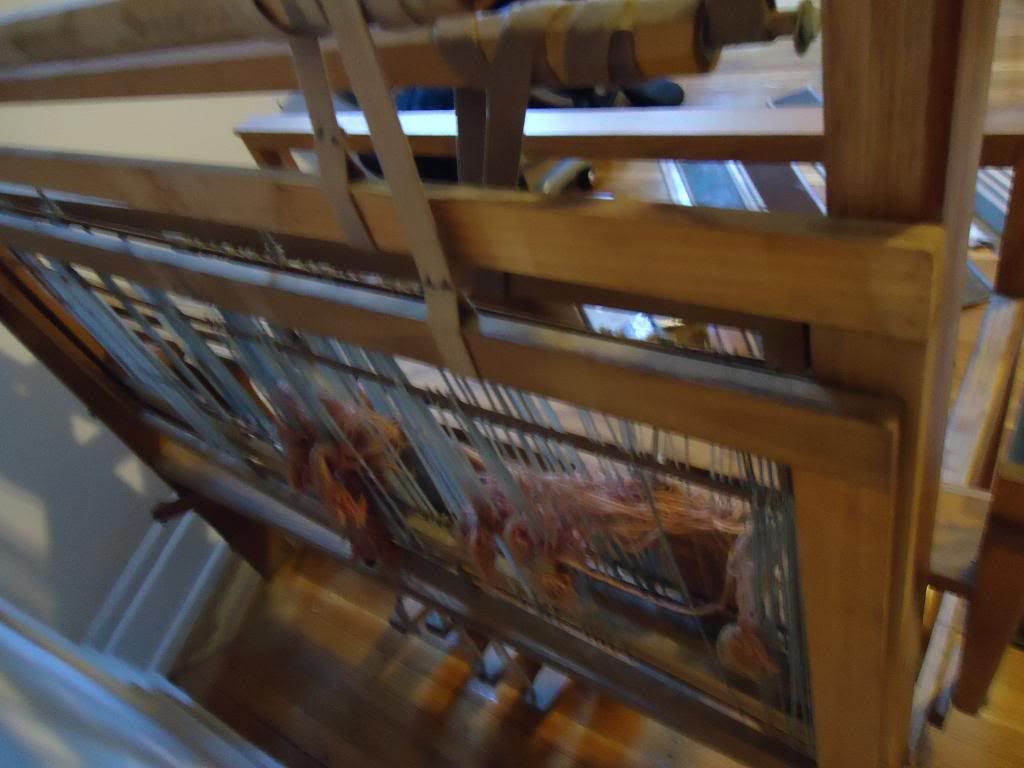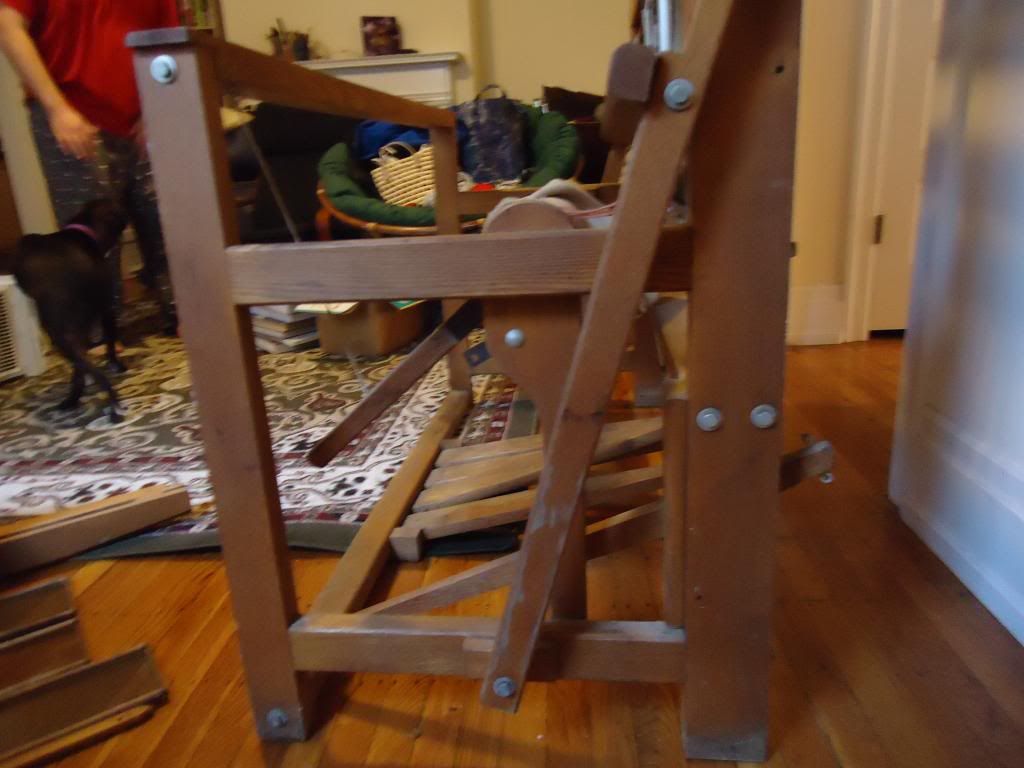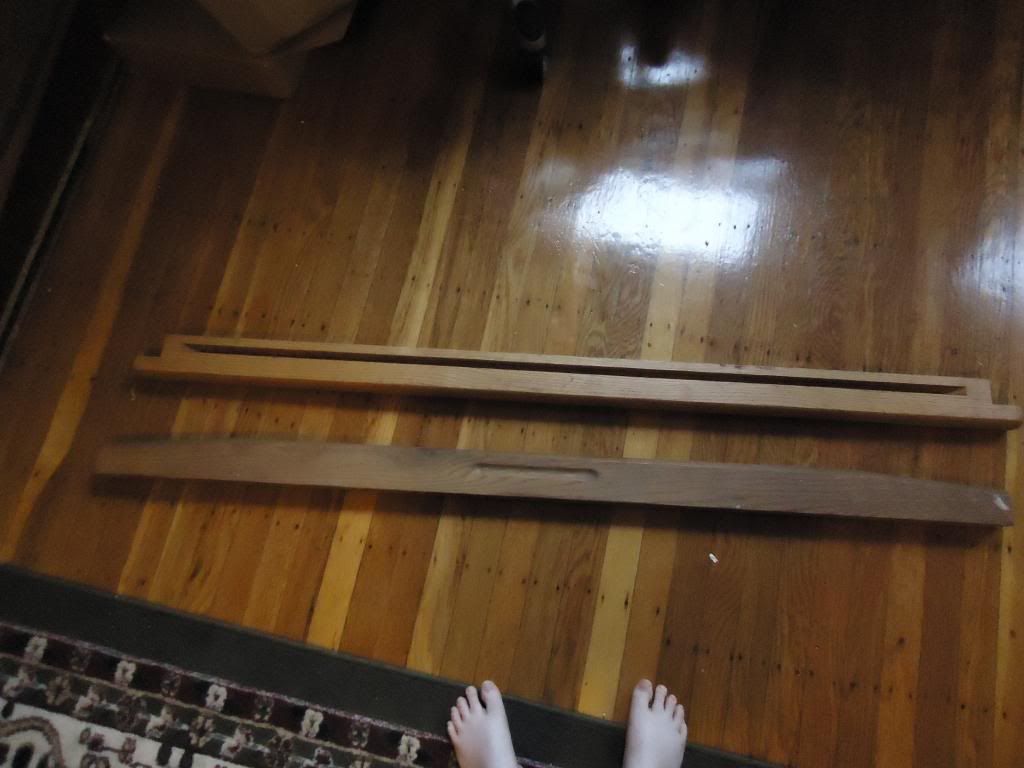Hi everyone,
I recently acquired a loom that had been sold to me as a '42" Manning loom'. A little research and looking at pictures has me certain it's a Gallinger loom, built and sold at The Mannings. Most of what she needs is a bit of finish work (sanding, refinishing, etc), but there are some bigger issues, too. The loom is a 4-harness counterbalance.
She's definitely missing her brake chain. If anyone can give me an idea how long her brake chain should be, that would be a big help. I figured that if I acquired some medium-fine chain at a hardware store, I could probably just replace that, as the spring is still in place. Her sectional warp needs a few pegs replaced, and one end of it needs to be cut down a bit and sanded because it's been badly damaged (the round disk on the left end of the warp beam - not the brake side, thankfully!)
She's currently in 2 pieces - the warp beam etc is not currently attached. The pieces that connect it to the castle have gotten flipped where they shouldn't be, but fixing that should be just a matter of loosening the bolts enough to flip them back into position and re-tightening them.
Here are the issues I need help figuring out how to fix:
Her harness aren't hanging properly from the castle. The rear two harnesses are back and to one side of where they should be hanging, so they're outside of the kind of frame shape of the castle. Do I just need to try to shift the straps, or is this a bigger issue? (most visible in pic 3)
There's a piece of wood whose purpose I can't figure out. It goes through a slot attached to the castle, but down low. In the side-on picture, it's the piece hanging diagonally that sticks out farther back than the castle, has an eyebolt on the end. It looks like it's a handle, but to what? (pic 4)
I have a cloth apron on my cloth beam. It looks to be glued on. Is there a good way to get that clean without removing it? This poor baby has been sitting in a garage for years, uncovered, so it's absolutely filthy.
I have a piece not currently attached to the loom that looks identical to the bottom piece of my beater. Is that what it is, or is this some other piece of loom? (pic 5, the upper piece, I know the lower one is the top of the beater)
I know the first picture makes it look like the whole loom is cock-eyed, but it's not. My fiance is not a good photographer.
Thank you in advance for your help!
~Blaze





